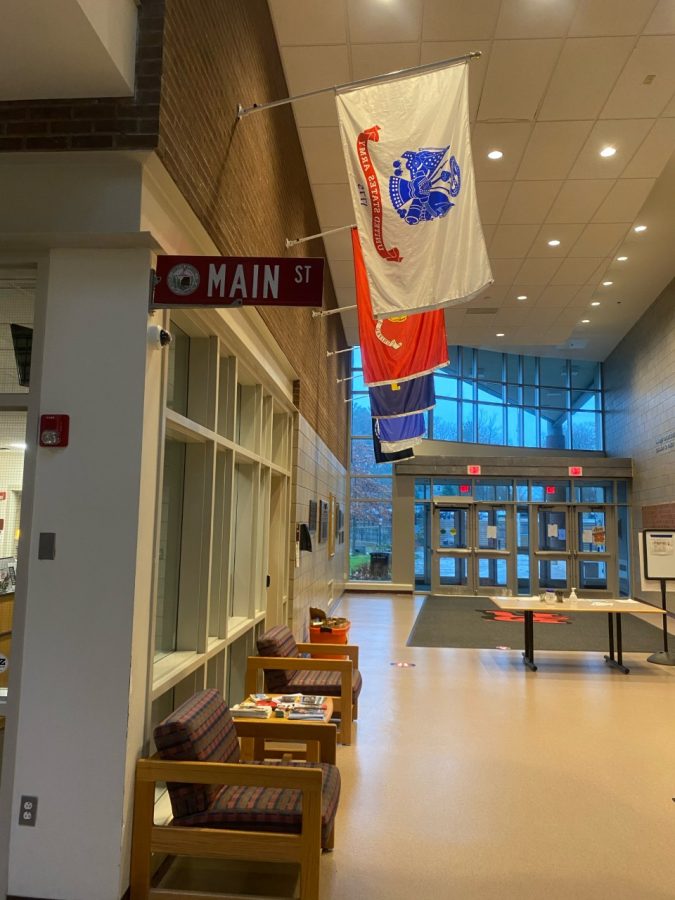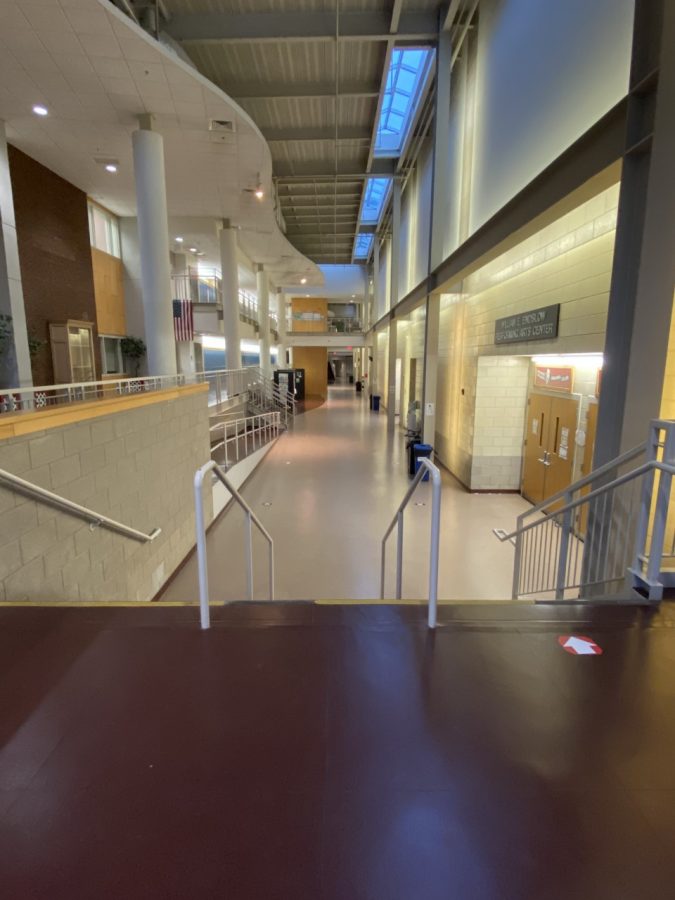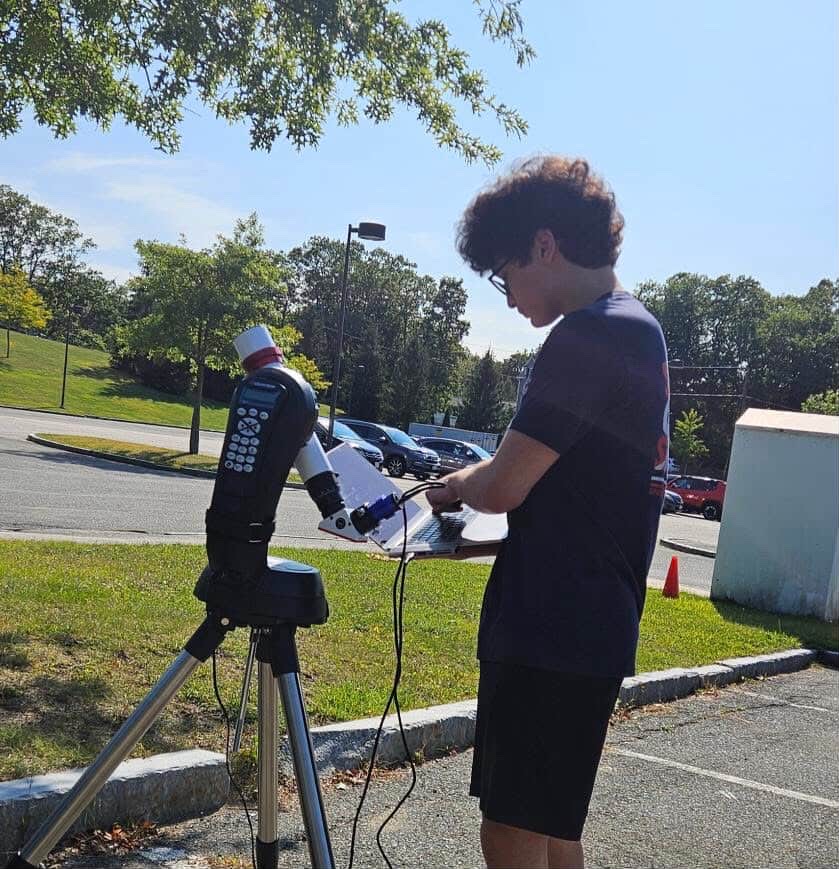Implemented at the start of the second semester by RMHS administration, the pilot schedule now has the school weighing pros and cons after the test run came to an end on the Friday before February break.
According to the RMHS Newsletter, this schedule was put in place to increase learning time, increase equity for students and departments, increase opportunities for student engagement, and for common planning times. This schedule makes each class the same length, including flex block. This is accomplished by dropping two blocks on flex days, which are days 2 and 4. On those days, two classes drop to achieve the same length blocks every day, maintaining a constant length of 58 minutes per block. This is different from the original schedule, which has shorter blocks on Tuesday and Thursday, days that have flex block. On these days, regular classes would shorten an extra 10 minutes to create enough time for flex blocks. This left less time for students to do work in their classes. Another feature of the pilot schedule are “Red and Black days,” which consist of four 88-minute blocks that occur every other week on Thursday and Friday. The newsletter says that this is to “meet the needs of all science classes with labs and to give equitable instructional time to all staff throughout the school year.”
Origins of the Idea
RMHS faculty and students still have many questions about the schedule’s purpose and next steps. To find out more, we talked to Principal Callanan, who was on the final scheduling committee that came up with this pilot. In her interview, she mentioned that “there have been committees and consultants for about five years now that were hired to analyze the current schedule and determine whether it was efficient.” When she became principal, the scheduling committee had already generated some appropriate schedules to pilot, and they decided to implement one of them.
Mrs. Callanan also brought up an important reason for the proposed change to the schedule–time spent on learning. “One of the purposes is to increase time spent on learning for students. We have to have 990 hours of instruction, where students are being taught every year. [The new schedule] moves us from 990 to a little over 1000, which gives us a little bit more wiggle room if we ever need to have a delayed opening or an early release. ” In addition to time spent on learning, another goal of the new schedule is to make the schedule more even for all departments. Currently, many AP Science classes will have a second block every other day, leaving students with less room in their schedule to take different classes. With this new schedule, Mrs. Callanan said “We’re trying to find another way around that. So giving the time to have the double AP science blocks, but making it more equitable across the school.”
Computer science teacher Mr. Strout attended all of the meetings where the pilot schedule was planned. He advised the committee responsible for the creation of the pilot schedule on what they could implement and what would not be viable from a realistic, logistical standpoint. Once all of the ideas were finalized and organized, Mr. Strout was the one who sent each student their own individualized schedule. Mr. Strout summed up his work on the pilot schedule with, “So most of my work was on the technical end. I was part of all of those other discussions, but…I didn’t have any real say in it.”
Early Reactions
During this trial period, Mr. Strout said he primarily noticed positive reactions from both teachers and students. “I was in a meeting with some teachers the other day and they were all like, ‘you know what, can we do this for the rest of the year?’ I’ve heard similar things from a lot of students.”
“Personally, I only teach two classes, so it doesn’t really… these changes don’t have a big impact on my day-to-day way of doing things,” Mr. Strout shared. “But I want to do what most people feel is best and I think, like I said, I’ve heard from so many students and so many teachers who really like this new schedule so I hope for their sake that we do move on and do it.”
Teachers have expressed both support and dismay with the new schedule. When asked whether or not she liked the new schedule, Ms. Bailey, of the social studies department, said, “There’s parts of it that I like and parts that I don’t like,” going on to explain her appreciation of the consistent block length. Her initial impression was that it would be hard to drop two blocks, but she said, “It turns out it’s easier to keep them in the same place if they’re all the same length every day.” The consensus expressed by both teachers interviewed supported the schedule having pros and cons.
Ms. Schuette, of the science department, said, “Going into it, I had a lot of mixed feelings because, of course, it’s a change to our regular routine in the middle of the year, but I was also very keen on seeing how things would pan out.” Ms. Schuette also agreed that having a predictable six block, consistent bell schedule would be advantageous. The schedule impacts her teaching as an AP Science teacher since AP science classes have double blocks every other day, but that changes under this schedule. She expressed her dismay saying that, “What I’m not looking forward to is, of course, the removal of double lab periods for AP sciences, which cuts out a significant amount of time for our curriculum, which is already slam packed.”
While teachers had a lot to handle with the new schedules, the guidance office was filled with lost students who needed help. Speaking to Ms. Rondeau of the guidance department, she has had firsthand experience with seeing students come in asking about the schedule. Ms. Rondeau said, “We also have had many kids come down, just confused. Miss Haley deals with many kids coming in and saying, “Where am I supposed to be? What’s the schedule today?” Ms. Rondeau feels that, except for the kids being confused, the schedule has had a positive impact, and there have been no genuine complaints about it except for how long the eighty-minute classes were.
“The only complaint I have heard is the eighty-minute blocks. So I would say aside from that complaint, I have not heard one legitimate complaint about the new schedule,” Ms. Rondeau said. At first, many students and teachers thought the schedule was going to fail and be horrible but once starting the schedule people have had different mindsets. After talking to students and teachers, Ms. Rondeau said, “I think teachers appreciate it. Every day, all of the classes start at the same time, so there’s no confusion about when class starts or when it ends. So I feel like that consistency is nice. Another thing that students do like about the new schedule is that they get to drop two blocks every other day instead of just one.”
Student Perspectives
It is certain that the students at RMHS are also greatly affected by this new pilot schedule. The Juniors at RMHS have gone through three years of high school following the normal 7 day drop schedule and, therefore have a lot of experience with it. This new pilot schedule, however, proves important for the juniors as this could possibly be their schedule for their senior year of high school. When asked if she would like this schedule to be implemented next year, Maya Liteplo (‘25) said, “yes,” as she likes, “the more consistent blocks.” Liteplo also added, “It wasn’t hard to adjust either as it was still very similar to the previous schedule.”
A major concern for this schedule in the eyes of most students were the 88 minute blocks that would be every other Thursday and Friday. When asked if the 88 minute blocks were too long or beneficial, she answered, “Teachers worked to break it up nicely.” Liteplo brings attention to the fact that most people went into the pilot schedule with the idea that the 88 minutes would be too long and therefore unproductive, but some were pleasantly surprised when they went into it the first time.
Nate Vitarisi (‘26) also shared his views of the new pilot schedule and said, “I like it, ‘cause I am used to it and now that we drop two blocks, I think that it’s good.” Vitarisi refers to the two blocks dropped on flex days which are day 2 and day 4 of the new 5-day schedule.
Moving Forward
Students will be happy to hear that they will have a say in whether or not this schedule becomes permanent. There will be student surveys at the ending of the pilot for everyone to offer up their opinions. Additionally, Mrs. Callanan will likely be holding meetings during flex so anyone who wants to give feedback about it will be able to.
While the pilot does not mean a new schedule is imminent, the newsletter states that the administration will “survey staff, students, and parents/caregivers, and then sit down to talk through that feedback and then make an informed decision about changing it.” If there were to be a change implemented, it would likely be for the start of next year. Additionally, there is no chance that the pilot schedule will be continued for this year, as the old schedule will resume on Monday, February 26 as a Day 6.






